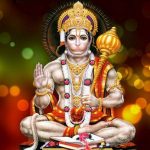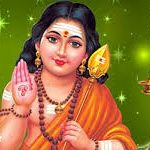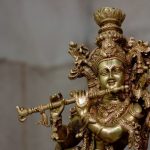Lord Ram is the seventh avatar of Lord Vishnu. Lord Ram or Rama was born at the end of the Second Age which is also called Treta-yuga. The Vana Parva of the Mahabharata as well as the epic Ramayana recount the story of Lord Rams birth in Ramayana.
King Dasaratha And His Queens
King Dasaratha, the father of Lord Ram, ruled over the kingdom of Kosala. It was one of the most prosperous one in the world. Ayodhya was the capital of the kingdom and was also a beautiful city. Lord Ram’s birthplace was Ayodhya. The kingdom flourished under the benevolent rule of King Dasaratha. He was a good ruler and was also fond of the arts and very learned in the ancient scriptures. He had three wives but no sons. The scriptures state that a man without a son cannot attain the blessed regions that were obtained by his ancestors. The king worried about his predicament. He knew that he would only have a son with divine intervention.
Decisions To Perform The Ashwamedha Yagna
So, King Dasaratha decided to perform the Ashwamedha Yagna to obtain a son. He consulted all his councillors and also his priests. They also agreed with him that this ritual was to be performed. The chief priest Vasishta said that the ritual hall should be constructed in the banks of the river Saraya for it was a sacred place that would be worthy of such a ritual.
It was a great and difficult ritual. King Dasaratha said that if there were any mistakes, he as the Yajaman of the ritual, would be ruined. He requested his people to take great care in the preparation and performance of the ritual.
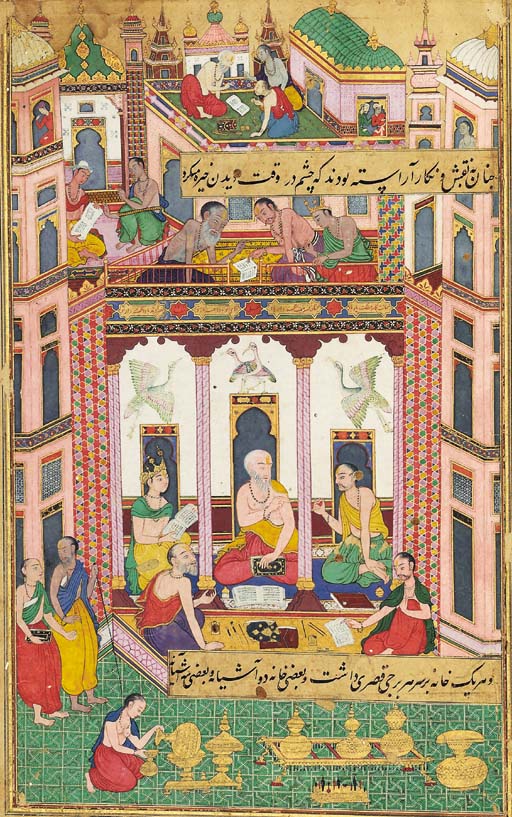
Lord Rams birth in Ramayana – Preparation For the Yagna
Sumantra was one of Dasharatha’s ministers and his charioteer. He told the king that he would be successful with Vasishta supervising the ritual. He reminded them that it was foretold by Sanat Kumara that the king would have a son when Rishyashringa, the son of sage Vibhandaka would conduct the Ashwamedha Yagna.
Rishyashringa
Rishyashringa was, at that time, in the kingdom of Anga as a guest of the King who was his father-in-law. They decided that if Rishyashringa would officiate, the rituals would achieve their purpose. The King Dasaratha set out in person to the kingdom of Anga for the purpose of getting Rishyashringa to perform his Yagna. The king of Anga was his relative and he was happy to go visit him after a long time. King Dasaratha was accompanied by his queens and also his ministers. King Romapada, the king of Anga welcomed them with great honour. The King of Anga readily accepted king Dasaratha’s invitation to the ritual and also sent a message to his son-in-law about King Dasaratha’s request. Rishyashringa readily agreed.
The Ashwamedha Yagna Preparation
Ayodhya was decorated in anticipation of the great Vedic ritual and the citizens were in eager anticipation of the event and obtaining an heir to the throne. King Dasaratha invited many eminent scholars to the event. The king and his ministers greeted Ritwik Rishyashringa personally when he arrived at Ayodhya for the ritual. They took him to the palace and the king offered him honour and worship as set out in the scriptures.
Rishyashringa was invested with the office of being the Ritwik or the chief conductor of sacrifices. Dasaratha could see the radiance of Ritwik Rishyashringa which was a result of his great knowledge and penance and he was happy and confident that his wish would be fulfilled. The woman of the royal household also welcomed Shantha, the wife of Ritwik Rishyashringa. It was necessary that as the Yajaman of such a big ritual king Dasaratha would have to undergo a year or various rituals and prepare himself for a year. King Dasaratha did all that was required of him diligently under the supervision of Rishyashringa. He was ready to perform the sacrifice for Lord Ram’s birth in Ramayana at the start of the spring season of the next year.

Lord Rams Birth In Ramayana – The Ashwamedha Yagna
King Dasaratha requested his chief-priest Vasishta to start the main ritual. He then instructed the scholars and architects to build the ritual hall in accordance with the instructions of the scriptures. Some close allies of King Dasaratha had come to Ayodhya a year ago to participate in the festivities. Now, the rest of them also arrived. Some of the guests present were Romapada the King of Anga, Janaka, the king of Mithila, the King of Kashi, Dasharatha’s father-in-law the King of Kekeya and his sons, Praptijna the King of Magadha, Bhanumanta the King of Kosala and others. They all gifted king Dasaratha with many costly gifts to show their affection for him. All the visitors to the city of Ayodhya during the Yagna were fed well. There were many debates, scholarly contests, plays, musical performances, dances and entertainment for the guests.
The ritual commenced at the appointed hour and the Brahmanas led by Rishyashringa and guided by Vasishta entered the ritual hall. King Dasaratha and his wives had to make formal vows before starting the ritual. With Rishyashringa and Vasishta directing the rituals, the customary rites were faultless.
Rishyashringa performed the rituals faultlessly. The king was generous in his donations to the chief priests for the sacrifice. He gave land and millions of cattle to the four chief priests of the sacrifice. King Dasaratha gave untold wealth in gold to the other Brahmanas who assisted in the sacrifice. Rishyashringa blessed him that he would have four illustrious sons. They performed the Putra Kameshti ritual for obtaining progeny.

The Divine Vessel – Lord Rams Birth In Ramayana
At that time the activities of the Rakshas Ravana had become intolerable to the Gods. Lord Brahma blessed him with powerful boons and he was using this to torture the sages, celestials and Brahmanas. Ravan had, with great penance, obtained boons from Lord Brahma. Devas, Gandharvas, Yakshas or Rakshasas could not kill him. However, in his arrogance that humans would not be able to harm him, he had omitted to add humans to the list.
The Gods requested Lord Vishnu to incarnate as a human and thus slay him. At that very time, King Dasaratha was performing his rituals. Prajapatya Purusha appeared in the ritual fire and gave the king a divine vessel that was the result of the worship. He told the king to give the contents of the vessel to his four wives who would then bear sons in the course of time. The King gave half of the contents to his first queen Kausalya. He gave one fourth to the queen Sumitra and then one eighth to queen Kaikeyi. He then saw that there was still one-eighth left in the vessel and he gave it to queen Sumitra again. In time all his queens were pregnant.
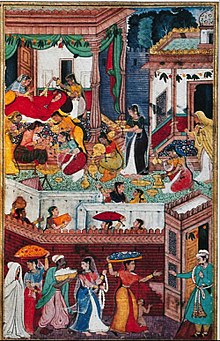
Lord Rams Birth In Ramayana
Lord Rams Birth In Ramayana – Four Princes
We have the exact time of the birth of the sons of King Dasaratha. The ancient texts describe the Vedic astrology position of the planets at their births. Lord Rama birth date is twelve months after the ritual during the month of Chaitra, on the ninth lunar day. The ascendant was Punarvasu, Sun, Mars, Saturn, Jupiter and Venus were all exalted. At Lord Rama birth the Moon was in the ascendant. He had long-arms, red lips and lotus eyes. Rama had divine attributes.
Queen Kaikeyi had a son named Bharata who would also grow to be famous for his great sense of justice. Queen Sumitra who drank from the vessel twice, therefore, had twin sons, Laxmana and Shatrughna who would grow to be great warriors. Bharata was a Pisces Moon with a Pushyami ascendant. The twins Laxmana and Shatrughna were both born under a Cancer Moon and Aslesha ascendant. The whole kingdom rejoiced at the birth of the four princes which was a long-awaited event. The king gave many rich gifts to worthy people. Eleven days after the sons were born there was a naming ceremony to name the princes.

King Dasaratha brought up the four princes well. Experts taught them the Vedas, scriptures and warfare. Lord Ram was good at horse-riding, archery, riding war elephants and also driving chariots. He was also the best archer in the kingdom. Laxmana was an excellent warrior. He was also extremely devoted to his elder brother Lord Ram. Shatrughna and Bharata were also very attached to each other. The king and his queens were glad to see that the brothers were so devoted to each other.





